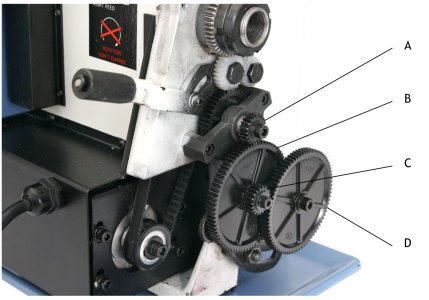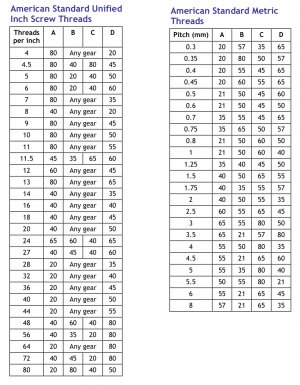You maybe able to swap the gears around in an unconventional manor to obtain the feed rate. Unconventional simply means putting the gears in a configuration not described in the manual. Lathe manuals usually only provide a very few of the possible threading or feed rates that are possible.
I have posted an Excel spread sheet workbook that can be configured for almost any lathe gearing and it will then by using pull down menus to describe the gears at the various locations the feeds and TPIs appear in other cells of the spread sheet. I did this first for my PM1440GT, but later I added other sheets for other lathes, but simply copying the sheet and then changing the gears. We can probably do this for your lathe if you can provide a manual and some other descriptions from the lathe. Do you have a manual? If so post it. The really powerful part of the workbook is that I wanted to learn to write Excel macros so I did. There are several very useful macros that run the lathe sheet of your choice and then generated a list of ALL Possible gear position results. Other macros allow you to search this sheet for the exact value you want or for close approximations to the value. There are other macros for sorting the lists etc.. There is a sheet in the workbook with extensive Readme notes.
You can get the workbook at the link below or directly download the work book at the following HM URL .
https://www.hobby-machinist.com/attachments/tpi_manylathesrev1-nb06_2023-zipped-zip.465427/
It is zipped because HM does not allow workbooks containing macros to be posted. Zipping the file hides this from the HM and allows it to be posted. Since I wrote the macros I know there is nothing harmful about them. In fact if you keep your Excel program set up so that it asks you before you enable macros you can look at the text file of them and see they are safe to run.
If you post the manual, a list of the gears, possibly some photos of the gear locations... that you have and which axles they will fit on .... I can take a look at generating the excel sheet for your lathe... or you can do it and I can answer questions. My guess is that your lathe does not have a gear box, only external gears? In this is the case, it is quite easy to set up the spread sheet. It is probably similar to the sheet I created for the PM1130V lathe. However, the number of gears listed in this sheet needs to be reduce as it is way to large to run the macros on. Doing so will take way too long.
Dave L.



